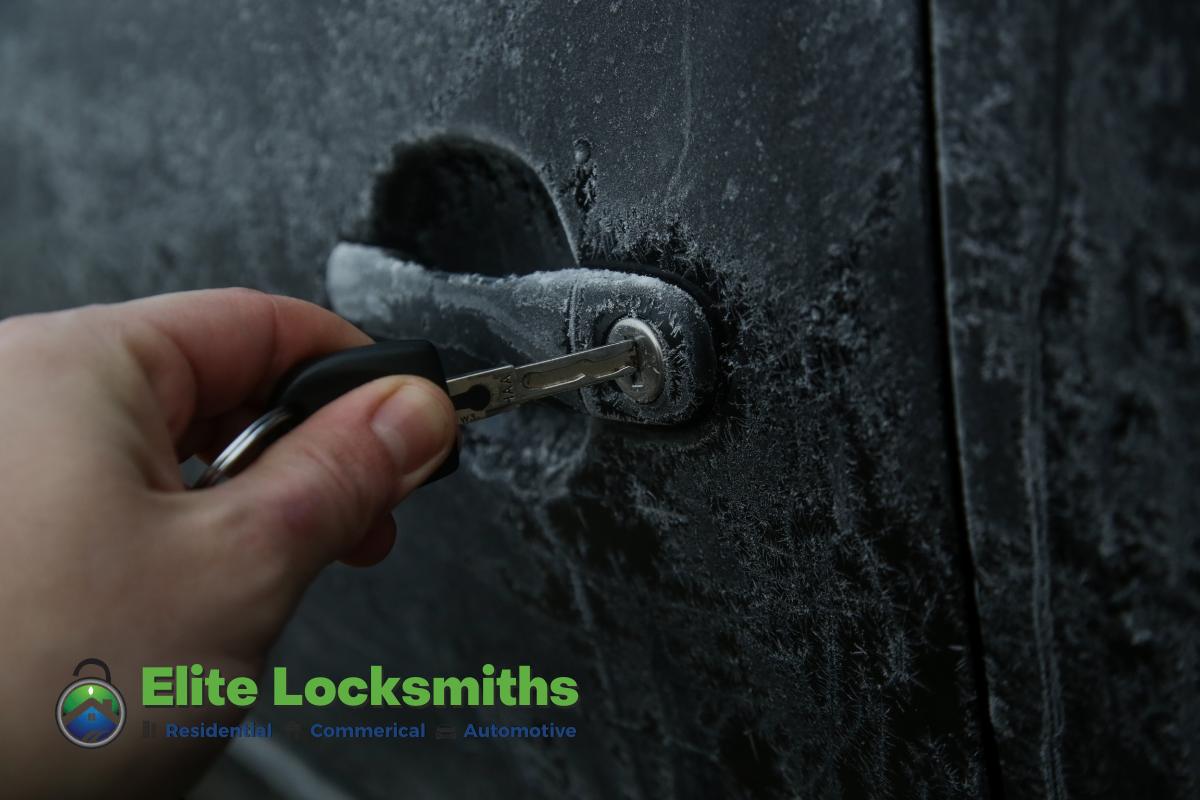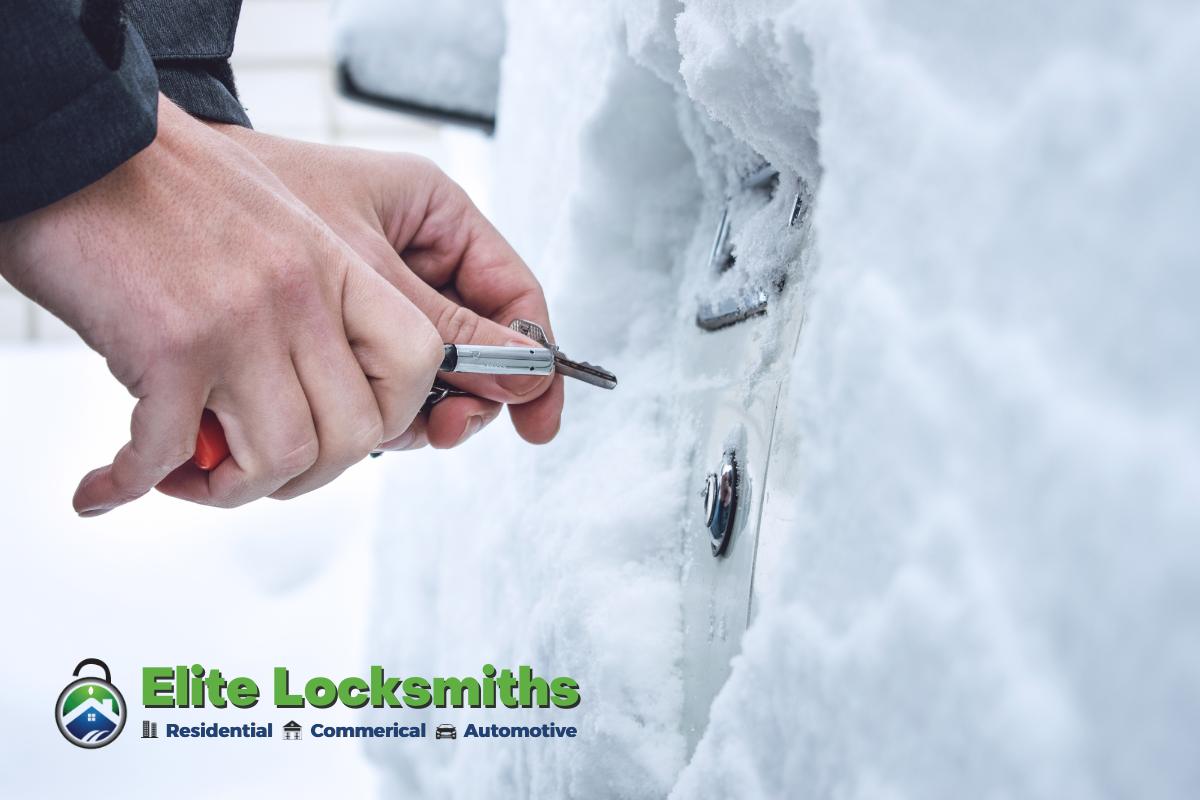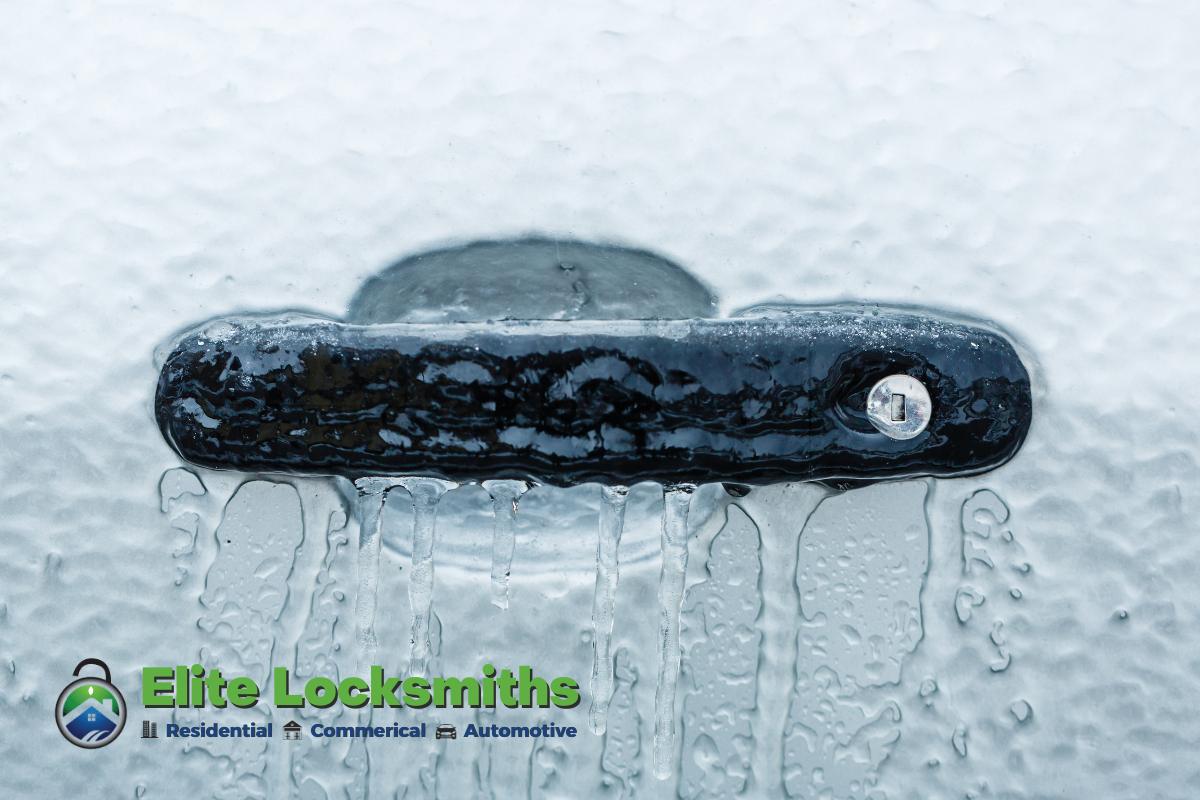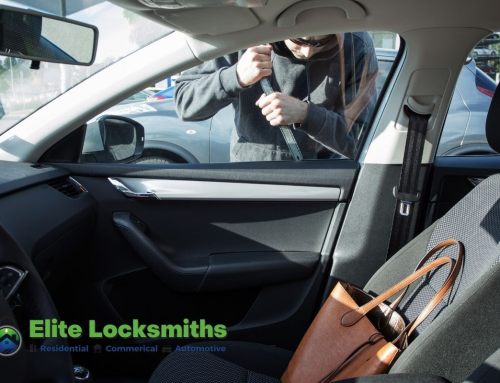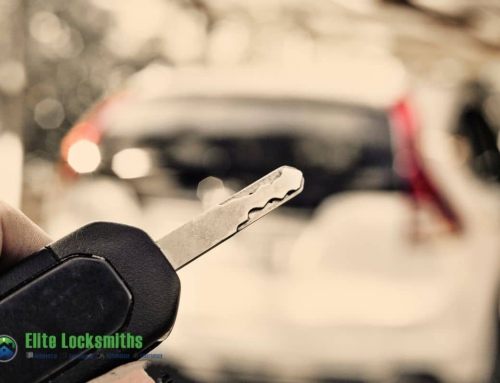The last thing anyone wants to deal with on a snowy Monday morning is a frozen vehicle door. A Stuck Vehicle Door on your way to work only adds to your Monday morning woes. Yes, opening your vehicle door in the cold and wind on a frigid morning might be difficult, but it is not impossible.
The lock and its mechanism might get jammed if exposed to snow and ice. The cause of a blocked vehicle door is usually obvious if your lock was operating properly before the snow fell. If that doesn’t work, you may always try the other front door and contact a locksmith after work to help you get in.
These five methods for thawing a frozen automobile door should get the job done.
First And Foremost
To begin, see whether the problem extends to any of your doors. Getting in and out of the automobile is a cinch if just one door is open.
Lock de-icers are a fast and simple solution if this isn’t an option.
- An aerosol with a particular nozzle that drives de-icer right into the lock or a heat source that heats up in the lock, melting any ice that’s formed, are two of the most common options.
- Spraying WD-40 straight on the car key produces the same result for some folks. In order to avoid the formation of ice in the first place, de-icer or WD-40 aerosols might be employed.
1. Isopropyl Alcohol
Salt’s anti-icing qualities have been matched by the chemical’s, which has a lower freezing point than water. Even though most of you have never heard of this chemical, it is widely accessible. Products that include rubbing alcohol or hand sanitizer often contain isopropyl alcohol. Several sanitizers do not include this ingredient.
There is no harm in having some of this chemical on hand since it evaporates fast and may be used to eliminate moisture from the skin. To unlock a frozen vehicle door, spray it with rubbing alcohol and try it. In most circumstances, you will be able to access it.
2. Vinegar
When Isopropyl alcohol isn’t readily available, vinegar may be used as a substitute. However, there are some drawbacks, including the potential for discoloration of the door’s glass, harm to the paint, and the lingering odor.
Diluting vinegar with water is the best method to utilize it. To clean the door, use three parts vinegar plus one part water. Better results may be obtained by spraying it directly into the keyhole.
3. De-icer
A commercial de-icer is an excellent alternative if you are unable to utilize homemade solutions. De-icers that employ calcium chloride, which lowers the melting point of water and prevents the water from refreezing, are often used in these applications.
Door locks may be defrosted using chemical deicers, which suck out water from the mechanism. For this reason, auto locksmiths prefer the use of isopropyl alcohol and vinegar, which only serve to melt the ice.
The problem is that they aren’t commonly accessible in retail shops; you’ll need to go to a specialized store to buy one. Be sure to look for any cautions on the label since certain chemical de-icers are known to cause metal corrosion.
4. Ice Scraper
While defrosting your automobile door in this manner may seem apparent, it is the most damaging. This method may not always be effective, particularly when there is ice on doorknobs and locks or in cracks of the door.
Only if you can see the frost on the door will this work. The door may be damaged if you use too much force while scraping the ice off it. The paint on the door latch may be damaged, as can the metal if you try to scrape off the ice.
5. Heat
Many people use a stream of hot water to get an ice-cold automobile door open. Some others use a hairdryer or a heat gun to attempt to achieve the same thing. There are certain drawbacks to using the latter method, including the risk of damaging the door’s locking mechanism and wiring.
The locking mechanism may be damaged if the water freezes and re-freezes; hence hot water is not suggested. Some folks use a heat gun to melt the icing built up within their lock. While this method may work, be careful not to overheat the key, as this might cause more damage to the lock.
Exercise warm air or water to defrost your automobile door, not “hot” air or water. In other words, use caution while utilizing heat to defrost your door.
Bottom Line
Though most occurrences of frozen vehicle doors do not need services, you must be cautious when attempting to DIY. A Locksmith With Your VIN can rescue you if things get out of control and you can’t get into your vehicle without destroying the door.


